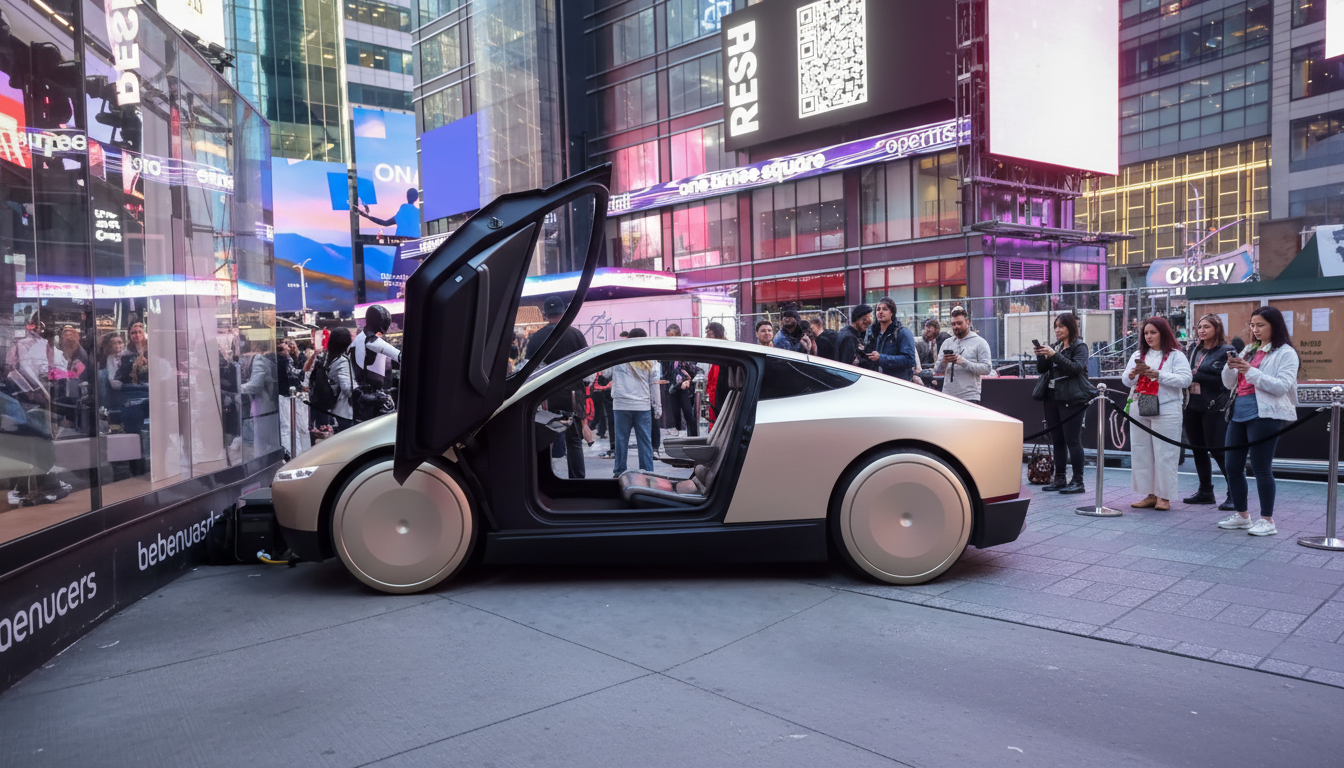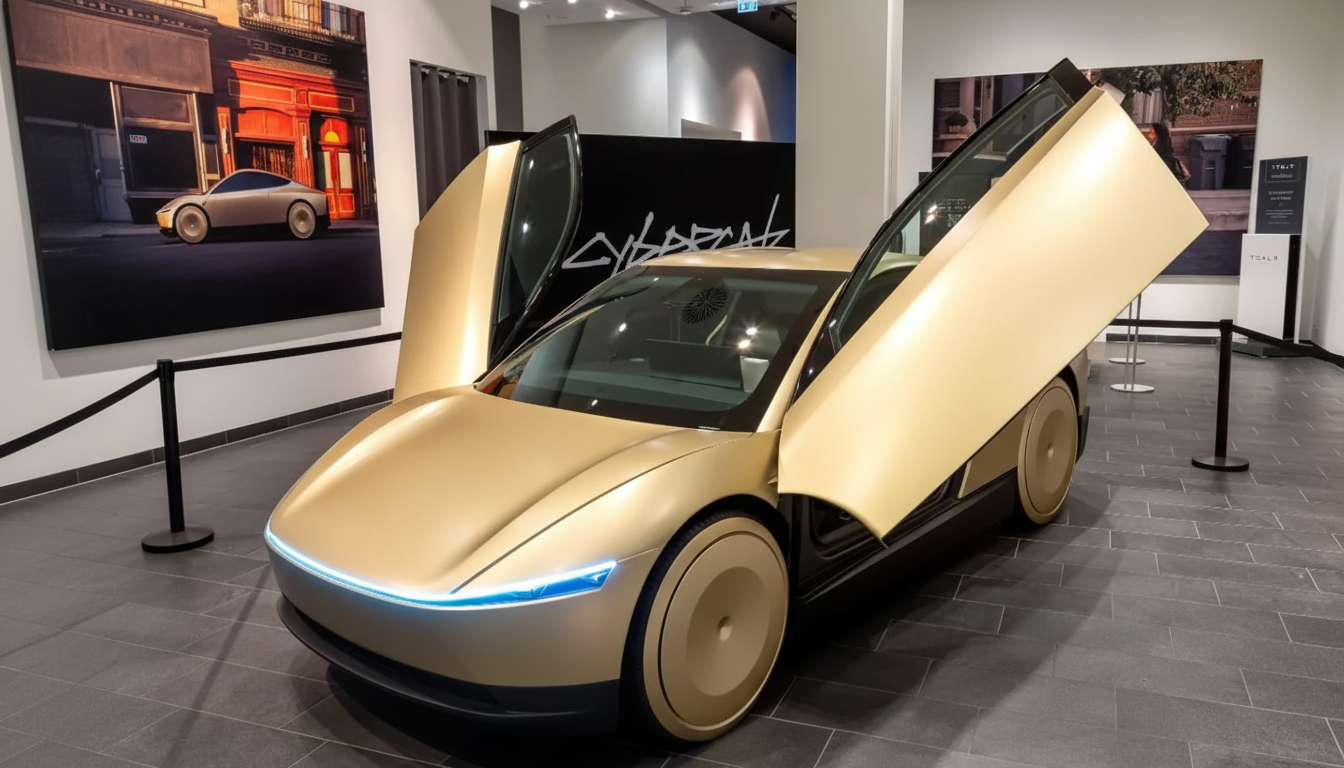Tesla’s robotaxi looks to be a bit closer to becoming a reality. Tesla board chair Robyn Denholm told Bloomberg that the corporation’s in-the-works Cybercab could ship with a steering wheel and pedals.
A practical shift to meet regulations and tech realities
The change in approach does not reflect a lower need, but it does indicate a more realistic assessment of regulatory limits and the state of the corporation’s automation stack. The shift is a stark contrast to CEO Elon Musk’s remarks during the vehicle’s release. At the time, Tesla’s leader would not have found it desirable to have driver-guarded controls because of Tesla’s pursuit of lowest-cost operation and simplicity-powered autonomy.
- A practical shift to meet regulations and tech realities
- Why keeping human controls can streamline compliance
- Safety and operational reasons for conventional controls
- Market examples show regulatory bottlenecks and limits
- Consumer sentiment and insurer comfort remain hurdles
- Design and cost implications for a modular robotaxi
- What to watch next on filings, permits, and pilots
- Bottom line on Tesla’s launch strategy for Cybercab

He has stated that while Cybercab is a platform aimed at minimizing cost per mile and volume, it is evident that the vehicle is an LD vehicle. Denholm’s comments imply that Tesla plans to launch a more adaptable platform, either because it believes it will bring it to market faster or because it has the potential to test autonomously in fewer places before regulations settle.
Why keeping human controls can streamline compliance
Steering wheels and pedals solve a variety of issues simultaneously. They enable Cybercab to stay within the prevailing interpretation of the Federal Motor Vehicle Safety Standards. This reflects a material reality that nevertheless favors human controls. They also enable Tesla to prohibit reliance on constrained exemptions. Without an exemption, noncompliant deployments remain at small scale, frequently about 2,500 vehicles annually.
Safety and operational reasons for conventional controls
Controls are also the ultimate safety and operations backstop. Even the most sophisticated automated systems are subject to edge cases — unmapped construction zones, unorthodox traffic management, extreme weather — where current AI takes longer to resolve ambiguity than a human. Employing conventional controls, Tesla could deploy Cybercab under direct supervision while continuing to update its codebase for unsupervised operation.
Regulation drives the rate. While the federal regulator has updated some guidelines to account for vehicles without a driver’s seat, the bulk of passenger-car standards are written specifying human controls. For genuinely control-free automobiles, automakers usually seek temporary exemptions or strive for distinct laws, activities that are prohibitively demanding and politically treacherous.
Market examples show regulatory bottlenecks and limits
Real-world situations illustrate the bottleneck. Waymo operates a developing driverless service with conventional controls in areas such as Phoenix and portions of California, and GM’s Cruise developed the Origin without a steering wheel but has had difficulty broadening access after safety reversals and legislative examination. Zoox has experimented with a specially constructed car without controls on restricted routes, while Nuro received an exemption for low-speed delivery devices — neither has devised a passenger-scale service model. For a high-volume-focused corporation, putting in controls is the simpler way.

Despite great improvements, Tesla’s marketed Full Self-Driving system is categorized as SAE Level 2, implying the human driver is always liable. Tesla has arranged limited journey pilots using vehicles with human safety drivers, reaffirming that unsupervised operation is not yet authorized. Prior to authorizing driverless passenger service, the federal authorities in prominent markets mandated comprehensive verification of safety, operational area restrictions, and incident studies.
Consumer sentiment and insurer comfort remain hurdles
Consumer sentiment matters, too. AAA surveys have consistently found that a majority of U.S. drivers remain wary of fully self-driving cars. Offering familiar controls could ease adoption, expand insurer comfort, and simplify fleet operations in cities with varying regulations.
Design and cost implications for a modular robotaxi
Engineering in steering and pedals does not preclude a robotaxi future; it likely means Tesla is building a modular platform. Drive-by-wire steering, integrated pedal assemblies, and a centralized compute stack make it feasible to ship one interior for early geographies and remove or retract controls later as rules and software catch up. Several suppliers already offer retractable or removable control modules for production lines, keeping per-vehicle expenses in check.
There is also a cost-per-mile connection. Even if controls increase hardware outlays, they can hasten scale by opening more geographies on day one, which reduces per-mile overhead more rapidly than waiting for all-clear regulatory signals. Fleet utilization, not just hardware minimalism, influences unit economics in ride-hailing, and utilization increases with availability and geography.
What to watch next on filings, permits, and pilots
Look for regulatory filings with the National Highway Traffic Safety Administration that might seek exemptions or clarify compliance pathways, as well as state-level permits from agencies such as the California DMV and Public Utilities Commission in which Cybercab will ship. Also, monitor interior patents, supplier contracts, and pilot programs that disclose whether it will be fixed, retractable, or removable.
Bottom line on Tesla’s launch strategy for Cybercab
It is easy to see the takeaway: Tesla may ultimately desire a purpose-built robotaxi, but the company’s best path to offering nationwide service likely involves a steering wheel and pedals. Denholm’s statement about “the easiest strategy for us” is a glimpse of the launch configuration, as Tesla needs scale and regulatory harmony now and may disable the driver when fortune, safety data, and the rulebook are in greater shape.

